The most northerly village in Wales, Cemaes
Our plans to run a Parkrun on Saturday were squashed by Storm Betty. She tore her way across Anglesey on Friday night and Saturday morning, ripping up trees and flattening awnings and tents in her wake. Fortunately Zagan is a bit more sturdy that canvas, but we still spent Friday night feeling like we were in a washing machine.
As the roar of each gust charged towards us I could feel my body tensing up, waiting for the bang of a satellite dish or a skylight being ripped off. Even with our steady legs down and ear plugs in, sleep was hard to come by. When I peered out around midnight the caravan next to us had someone inside the awning holding onto the poles trying to keep it on the ground. It was the only one standing on the site at dawn.
I must have got some sleep because I woke with my alarm at 7am. A quick check of the Parkrun Facebook pages and events were being called off, mainly due to felled trees on the courses. We had a quick chat and decided that even if the run was on we really didn’t fancy driving Zagan in these gusts – so we went back to sleep.
After a very late and sleepy breakfast we wound up the steady legs and rolled out of the Bodfan Farm campsite. Our destination was the seaside village of Cemaes, the most northerly village in Wales. The Camping and Caravan Club has another Temporary Holiday Site or THS (N53.40733, W4.459064) just a short walk from the village. Once again the THS is on a field next to a campsite, this time Dolydd campsite. We have access to water, grey and black waste and bins, but we don’t have access to the sites shower and toilet block. We’re only paying £15 a night though, and we’re happy to use our own facilities.
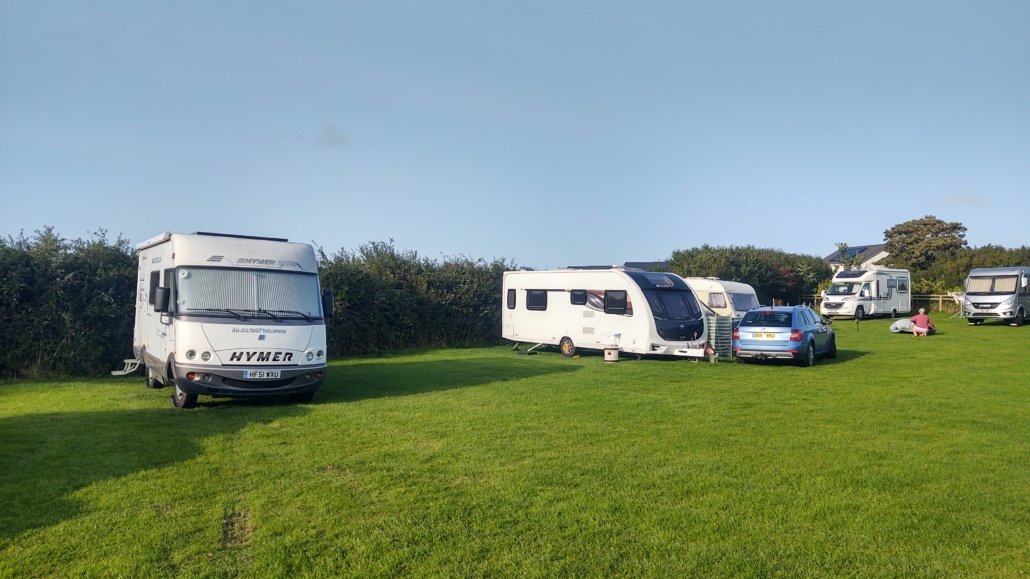
We were greeted by the site steward who gave us loads of information on what to do in the area as well as maps and leaflets. It turned out there was a sleepless night with awning holding down here too! So we took our time picking a pitch that was facing into the wind, with as much shelter from other vans as possible. Sometimes it’s not all about the views.
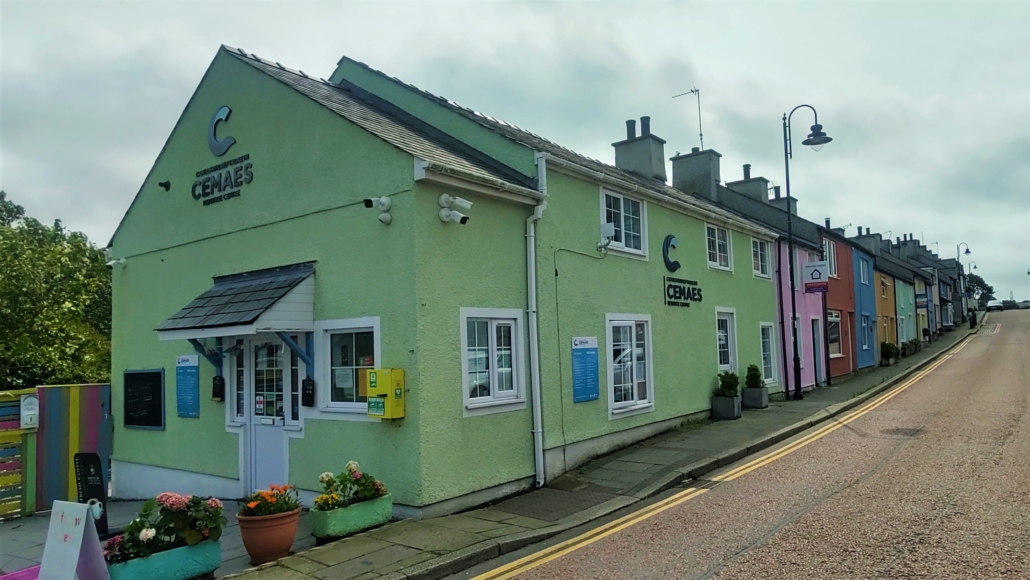
The village has winding streets and pastel coloured houses leading down to a harbour, flanked by beaches. There are a few cafes and shops as well as a couple of pubs. One pub is the most northerly pub in Wales (of course) and we were warned to brush up on our Welsh before entering the other.
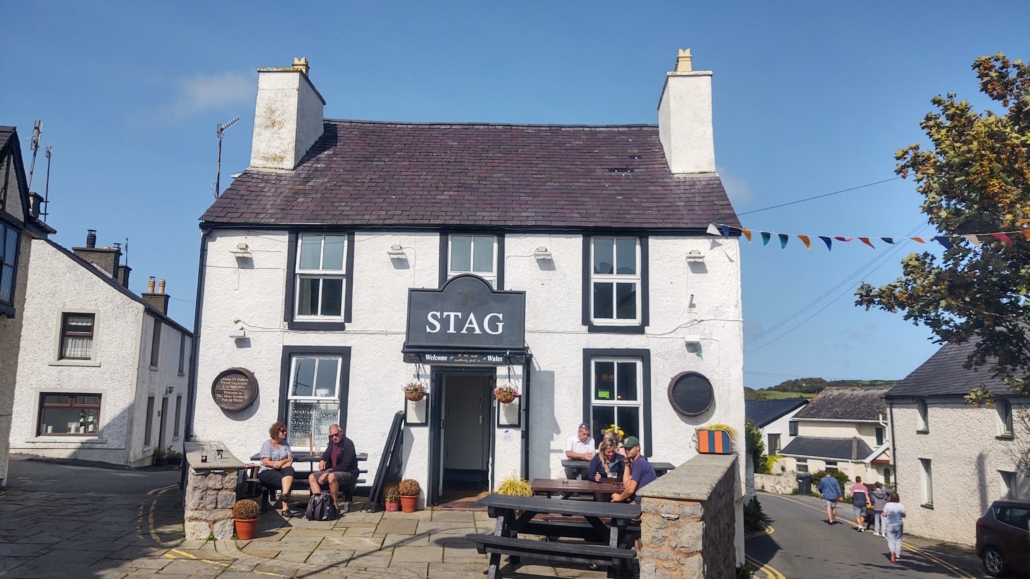
We spent Saturday afternoon wandering around the village and sitting in the sunshine on the harbourside watching dads and kids (OK, mostly dads), crabbing off the harbour wall. Despite the wind, Zagan was rock steady and we both slept like logs.
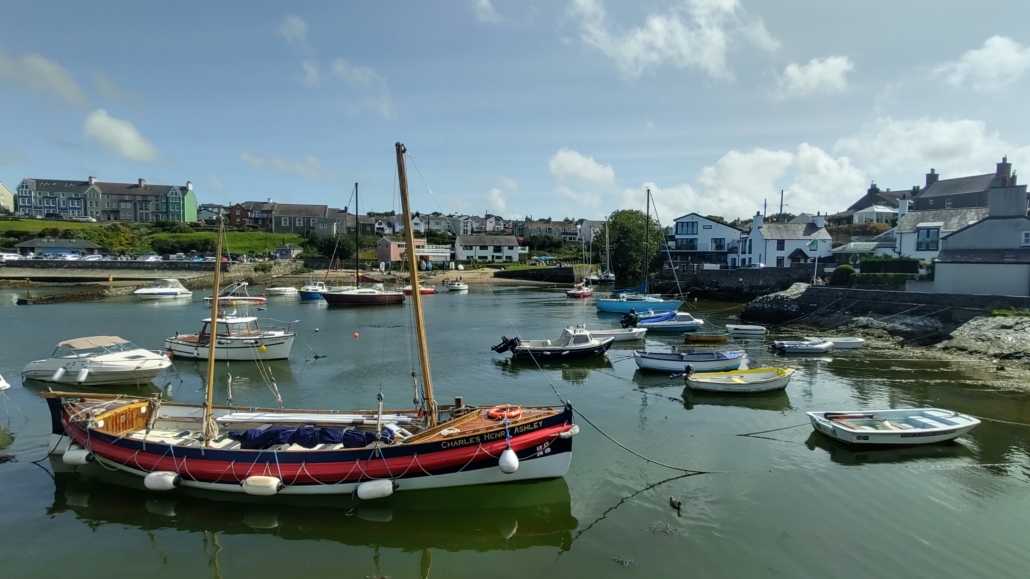
On Sunday morning we were both up early (for us) to get some running done before a certain football match took place. Heading out on the quiet country lanes, we got back with plenty of time before kick-off.
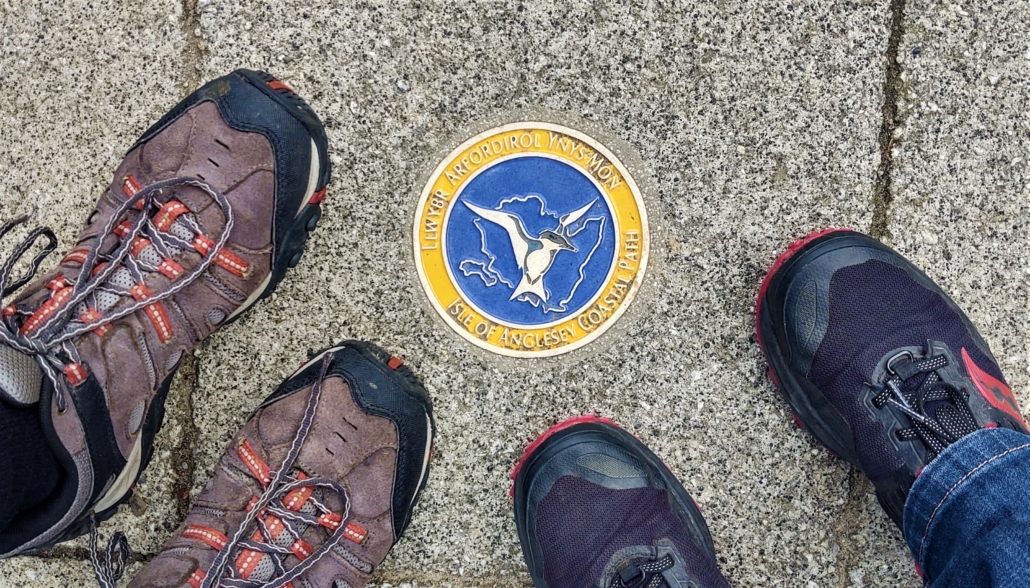
Fortunately the BBC was showing the World Cup Final, as our Amazon Firestick just buffers when we try to stream ITV live (we’ve tried everything they have suggested, but it still doesn’t work), and unsurprisingly the local pubs weren’t showing it. England’s Lionesses did us proud, especially Goalkeeper Mary Earps who is from our hometown of Nottingham. Sadly though, in my humble opinion (keep in mind I know nothing about football) the better team on the day won.
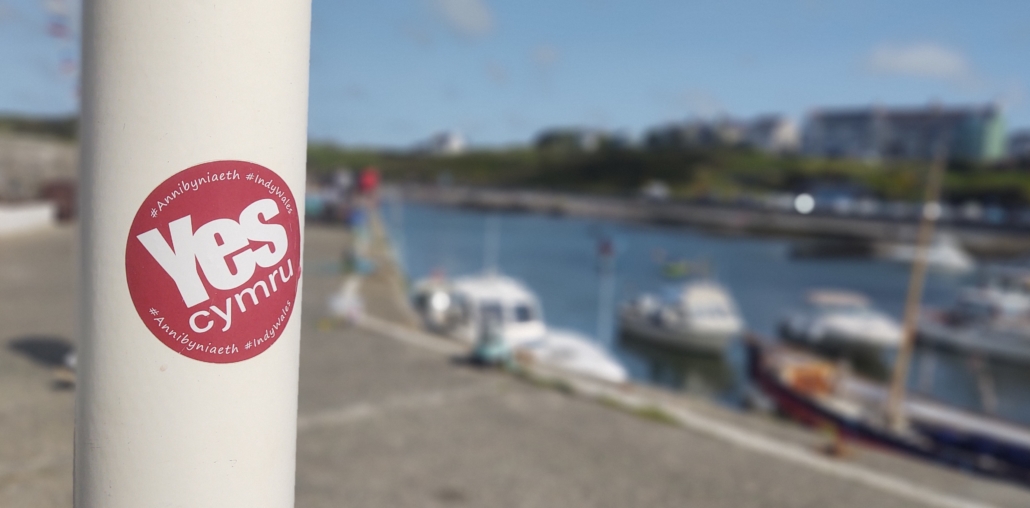
The Football World Cup wasn’t the only thing starting at 11am on Sunday, Cemaes was hosting its annual beach extravaganza. As the match didn’t go into extra time, we were able to wander down to ‘big beach’ to see what was happening. There were lots of folks dressed as pirates for the fancy dress competition and a few stalls such as ‘guess the number of sweets in the jar’, ‘a coconut shy’ and ‘drop a coin on a metal disc in a paddling pool’, not to mention the obligatory tombola. Sadly we missed the sandcastle building competition and the subsequent sandcastle destroying fun that followed.
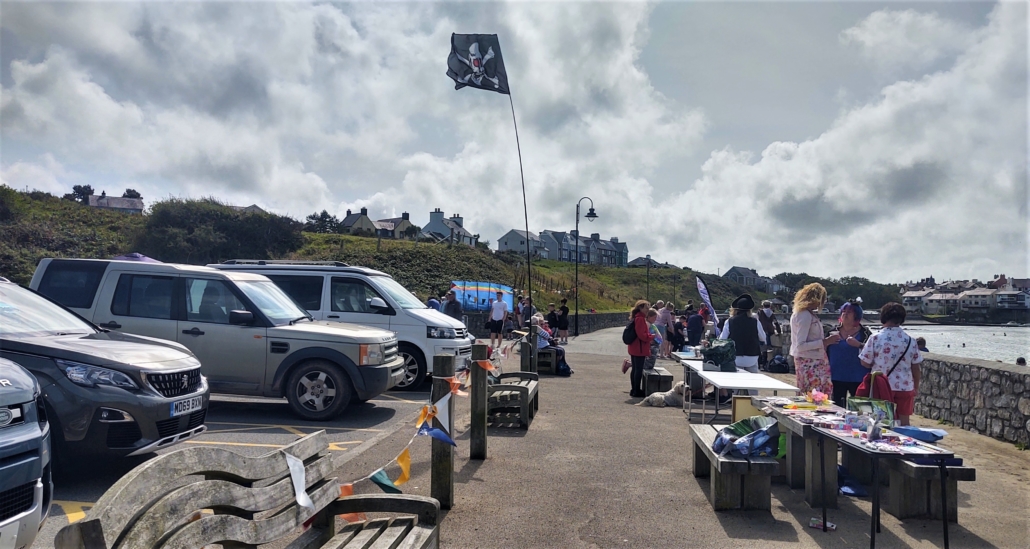
The beach and seafront were buzzing with people. Children ‘tombstoned’ off the harbour wall into the sea, some in synchronised groups, others dive bombing their way into the waters. We sat on a bench and people watched while I had my first ice cream of the trip – shocking as we’ve been on the road for over two weeks.
On Sunday evening we walked back down to the seafront to watch the sun set. It didn’t go into the sea (the best sunsets always do), but instead went behind a headland that the decommissioned Wylfa Nuclear Power Plant stands on. The plant was built in 1963 and decommissioned in 2015, but the building will still be there until the end of this century. Plans to build another nuclear power station on the site have been shelved.
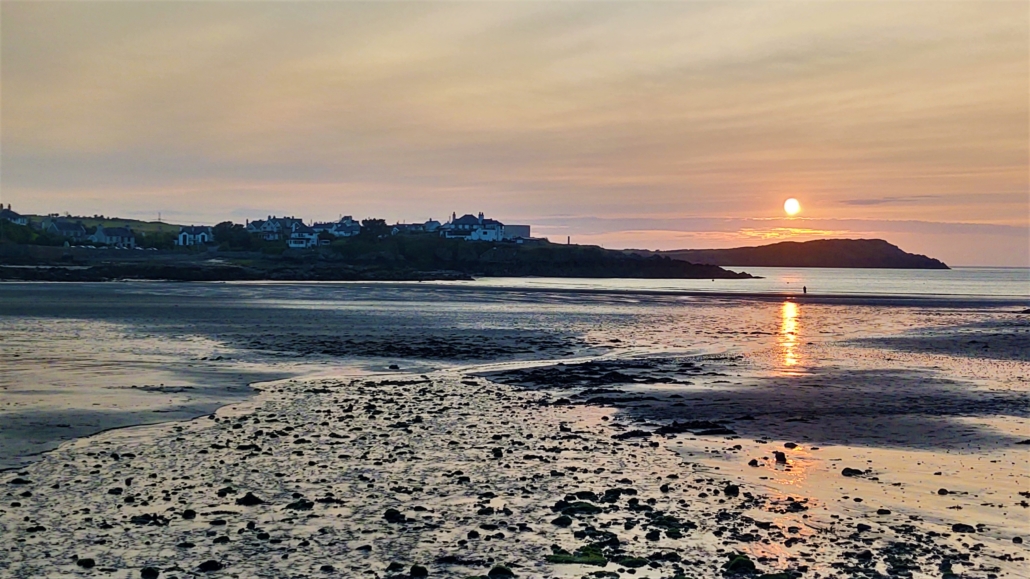
When we arrived in Cemaes we decided that Monday would be the best day to tick off an item we’d marked on our map. Our main reason for stopping at the village was to visit the ruins of the Porth Wen Brickworks. You can imagine we were a tad disappointed to wake up to rain and wind once again after such a beautiful day on Sunday. Undeterred, as it looked like the rain was easing around 11am, we grabbed our coats and set off. About a mile in we were soaked.
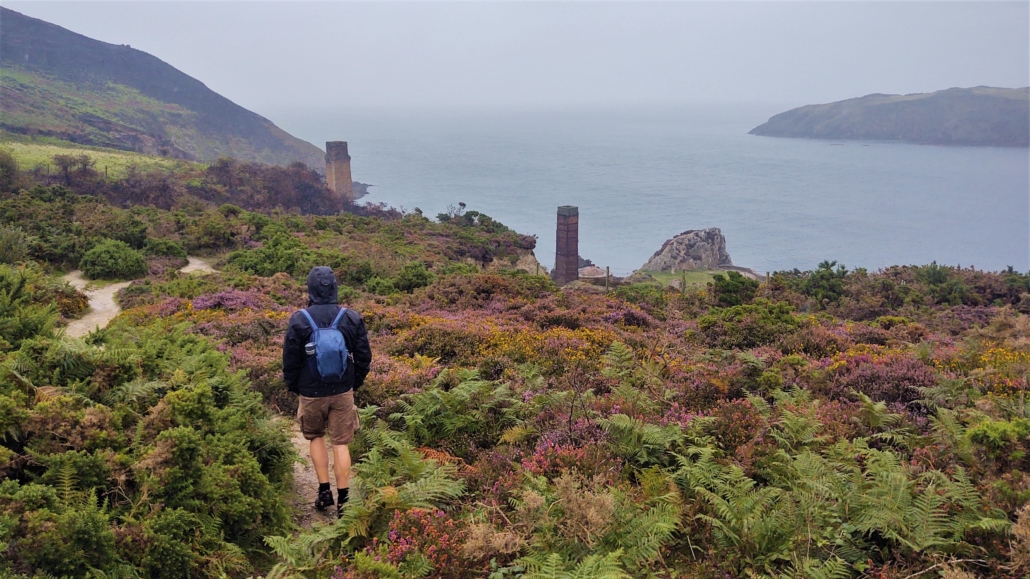
We could reach the site via either the coastal path (about 5 miles) or the roads (about 3 miles). We opted to head out on the roads, saving the more picturesque views from the coastal path for when the rain was forecast to have gone. A gravel path took us to a locked gate that we had to climb over, before a steep incline and several big muddy puddles needed to be traversed – fortunately there were plenty of bricks around being used as stepping stones.
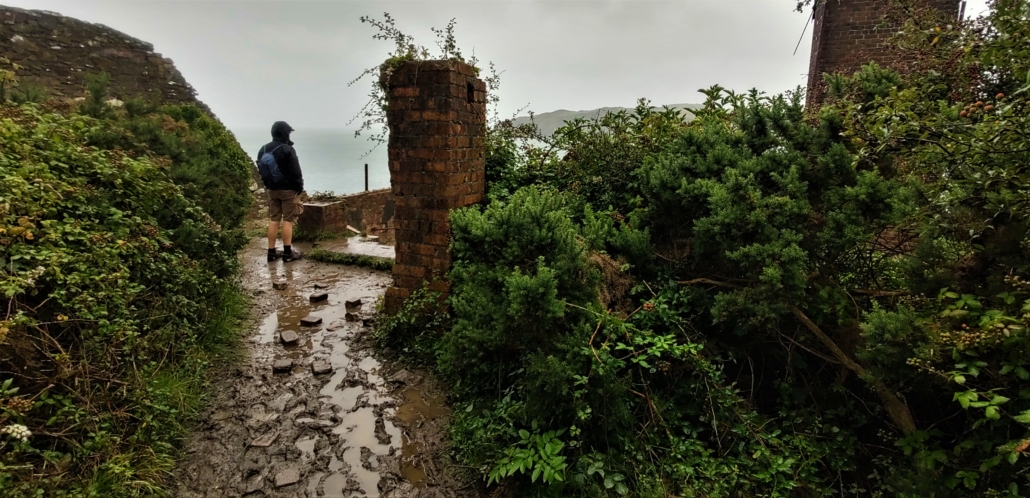
The path down to the site was much trickier than I thought it would be on a narrow, muddy and slippery path. But then I only found out later that the owners of the site say it is ‘private property and access is not permitted’. There wasn’t any signage, which is probably why there were lots of other folks down there too having a look around, despite the weather.
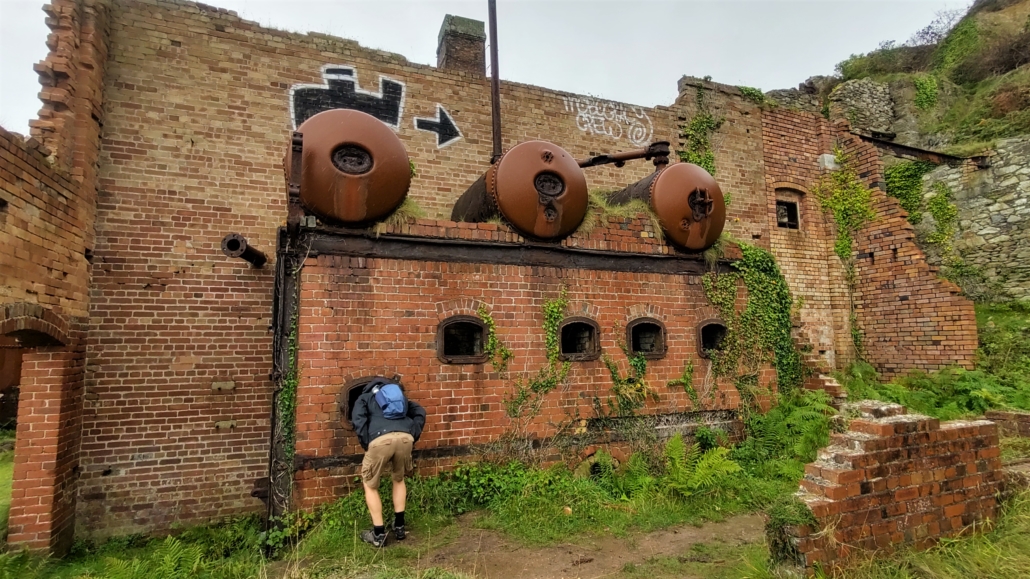
Why did we want to visit here? We’d seen photos of the place and it looked fascinating. Why is there a brickworks in the middle of nowhere on the coast of North Anglesey? Quartzite. The coastline has an abundance of the stuff and much of the wealth of the British Empire came from steel. To make steel you need furnaces that operate at very high temperatures, which needed specialised silica bricks. Quartzite is a rock rich in silica which is ideal for making the bricks.

The quartzine was quarried from the hills above the site and trammed to a winding house (which we passed on our way back along the coastal path). From the winding house it was sent down to the crushing house (in the middle of the photo next to the chimney on the left), and from there gravity was used to move it down to the brickworks level by which time it was just a fine powder. The powder was mixed with lime and water and moulded into shape before being dried in a drying house. We could still see the raised floor where the heat was pumped under. Once dried the bricks were moved into the three large round firing kilns.
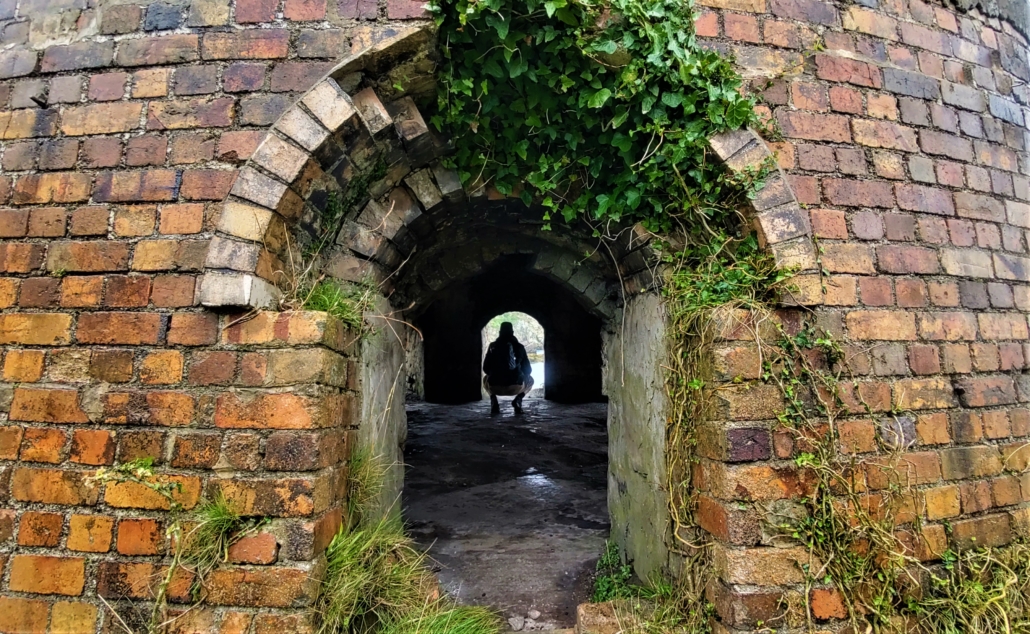
The brickworks date back to the Victorian era, but the beauty of the place comes from how nature has reclaimed parts of it. The sea has eaten away at the site, while ivy and brambles have made their home on the bricks. The harbour that was used to transport the bricks away from the site doesn’t look like a very safe place for any vessel, let alone one carrying tonnes of bricks. That was one of the reasons for the place being abandoned, too many ships were damaged.
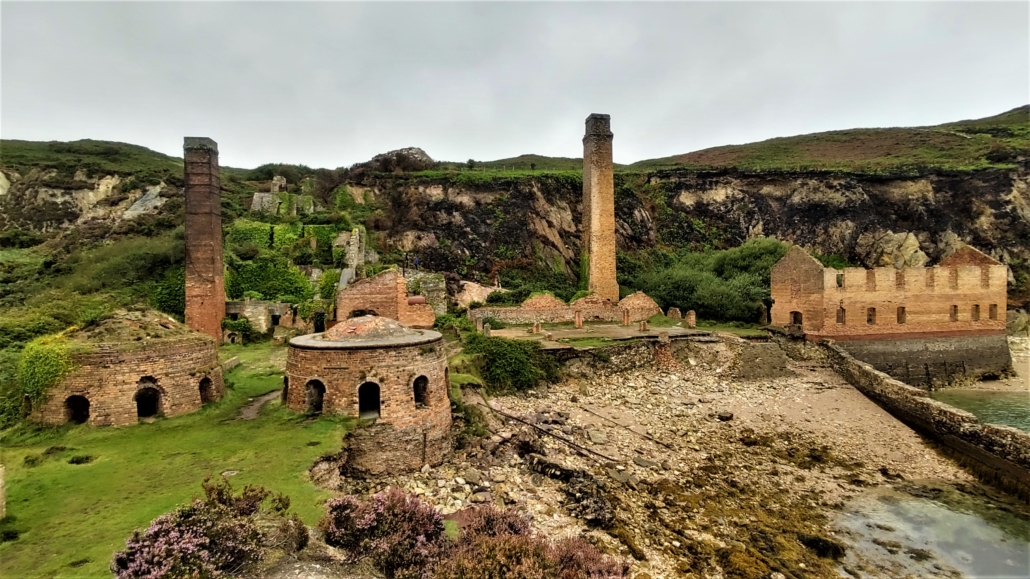
We’d have loved to visit the place on a sunny day, but having braved the rain it did mean that there were only a handful of people there, so plenty of opportunity to get photos without anyone in them. Some folks say it’s best to visit at high tide too, so you can see how hard it would be for ships to moor up. The tide was out for us, but we got to see the incredibly clear waters, reminding us of Greece, and ate our sandwiches in the shelter of the red rock cliffs as the rain hammered overhead.
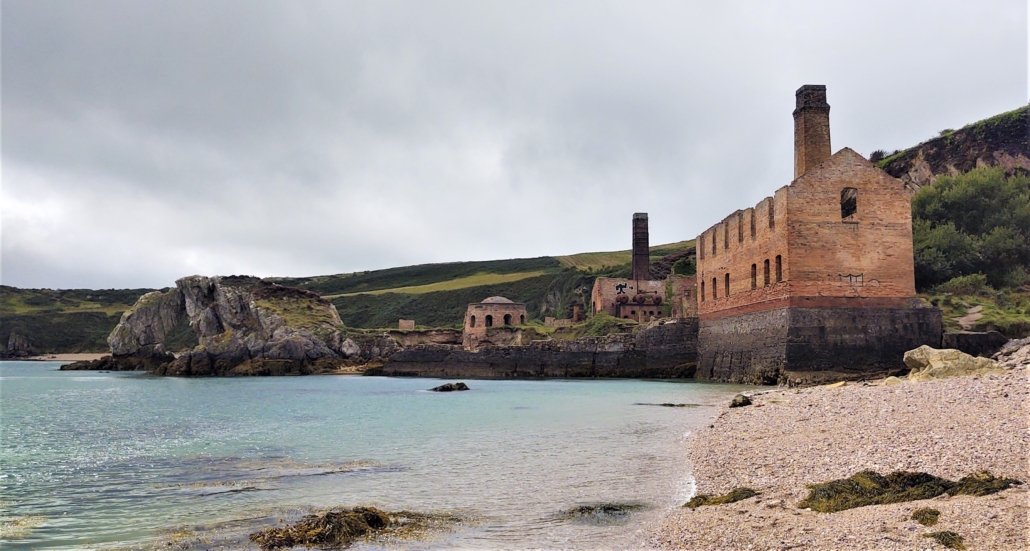
Coming out of our cliff cave hiding place, we made our way up to the coastal path and followed it back to Cemaes. That sentence makes it sound easy, and the distance wasn’t that far either – we walked just over 13 kilometres (about 8 miles) in total – but the terrain was a tad unforgiving.

The rain held off for our walk back, but the wind gusts increased in strength. Our wet clothes were soon dry, but it zapped my energy so I took to walking behind Jay and using him to try and protect me from the wind. It didn’t really work.
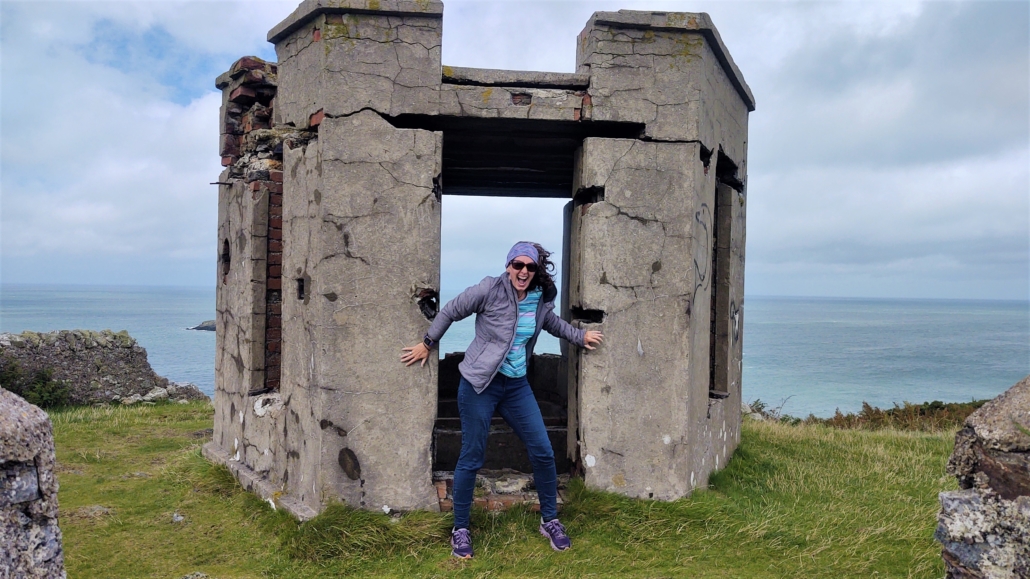
The land around here rises up to cliffs and plummets down to the sea, and the coastal path follows every contour of it. I lost count of the number of steps we climbed up and down, but it was worth it for the views.
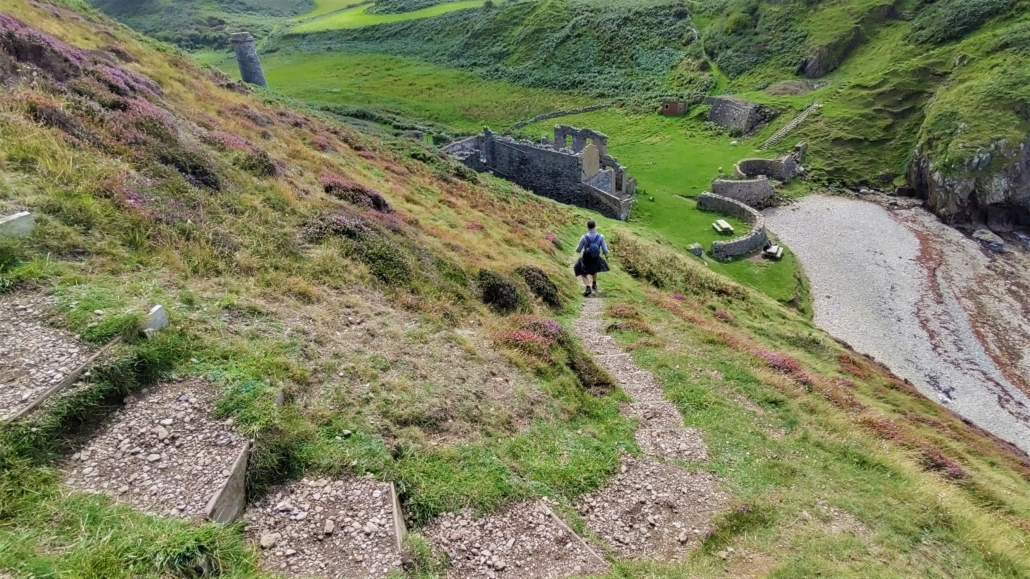
A surprise along the route back was another remnant from Victorian times, the remains of the Llanlleiana porcelain works. The works produced porcelain from deposits of china clay found on Dinas Gynfor, back up where the lookout tower was. Unfortunately it was damaged by fire in 1920 and never started working again.
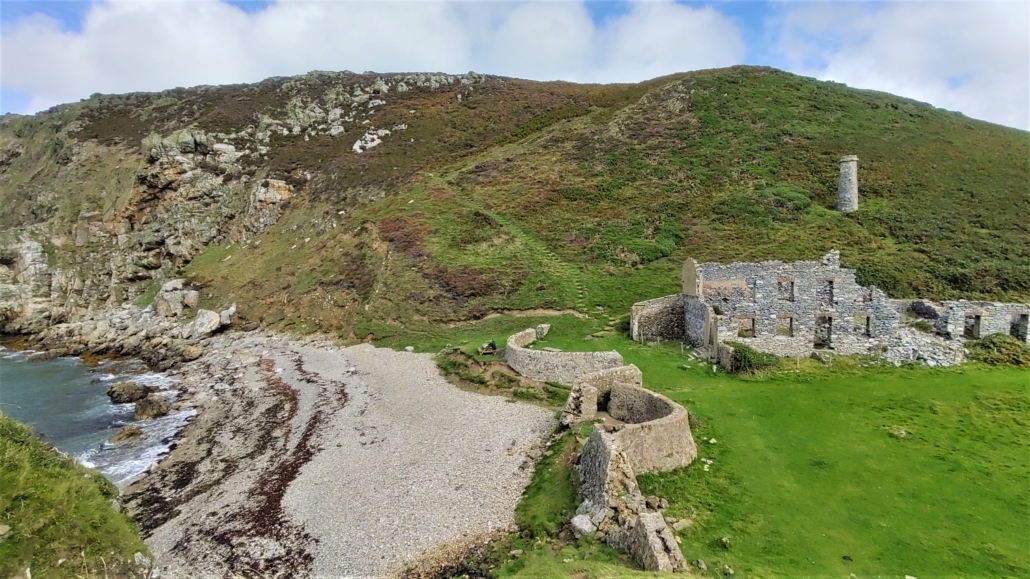
It took a lot longer to get back along the coastal path. At one point I was nearly blown back down a huge flight of steps as I reached the top at the same time as a strong gust of wind. After just over four hours we could finally see Eglwys Llanbadrig – The Church of St Patrick, which sits on the headland just north of Cemaes (oh and the square block that is Wylfa Power Plant) so we knew we were nearly back.
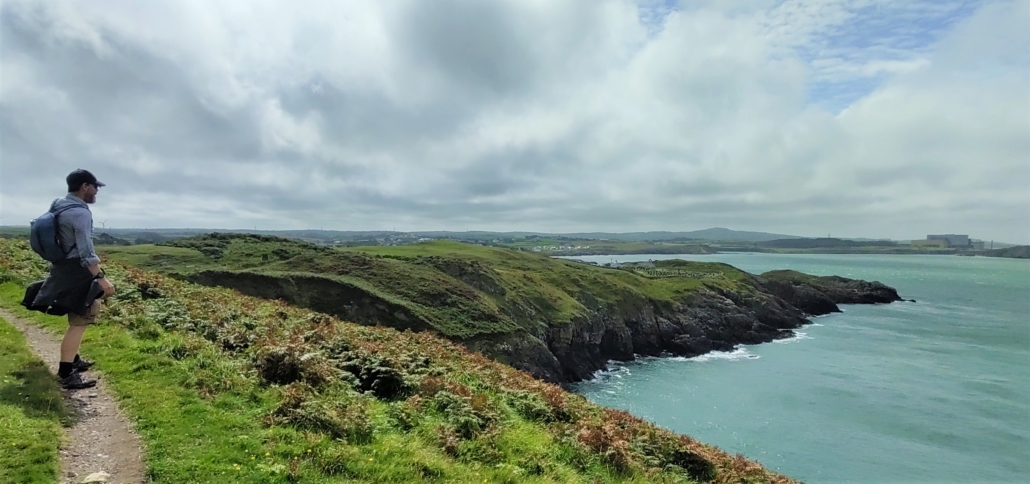
We stopped off to explore the church as is claims to be the oldest in Wales, as do many others, so we’ll settle with ‘one of the oldest’. The coastal path runs right along the side of it, with a few stones sticking out of the churchyard wall to enable you to climb over it.
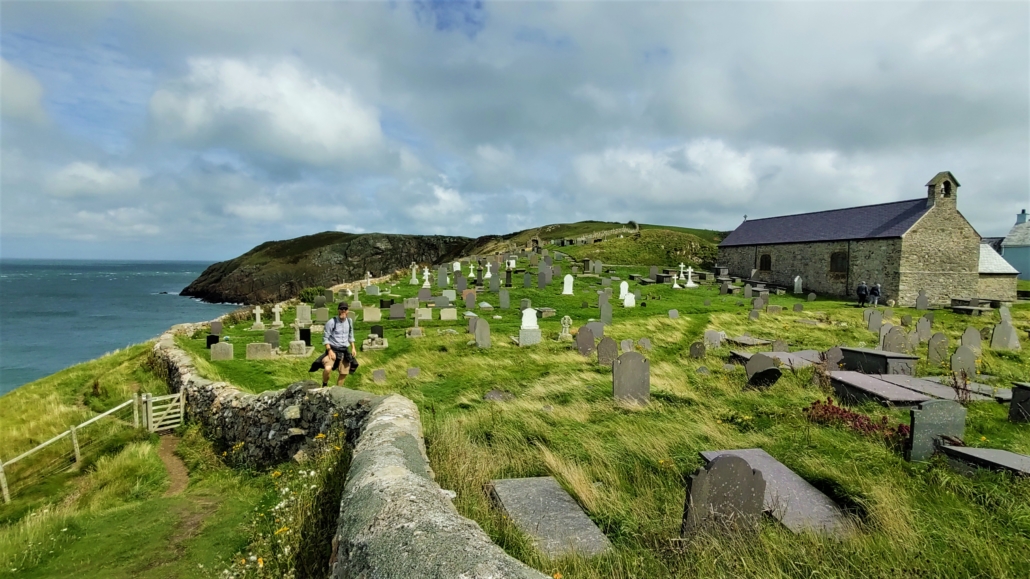
In the graveyard there were tombstones of sailors lost at sea in the area, as well as many enscribed in Welsh so we didn’t have much of a clue what they said. Unfortunately there was a service taking place so we didn’t go in. Only later did we find out that back in 1884 the church was refurbished to reflect the new faith of the 3rd Lord Stanley of Alderly. He had met and married a Spanish Moorish woman, and converted to Islam, then donated money to refurbish the interior of the church. It now boasts a contrast between the simple stone exterior and the Moorish interior, including blue tiles, blue glazed windows, and Arabic-style iconography.
On our final stretch of the coastal path back into Cemaes we were rewarded with the sight of a large seal sticking his nose out above the water. It was like he was welcoming us back.
Ju x
PS – It’s my best friends 50th birthday today so I was looking through some old photos to send to her. I came across a photo album from 2009 when we visited Anglesey in our first campervan – Harvey the RV. It turns out we’ve not only visited Cemaes before, but also Moelfre and South Stack Lighthouse. The most worrying thing is neither of us can remember any of it!
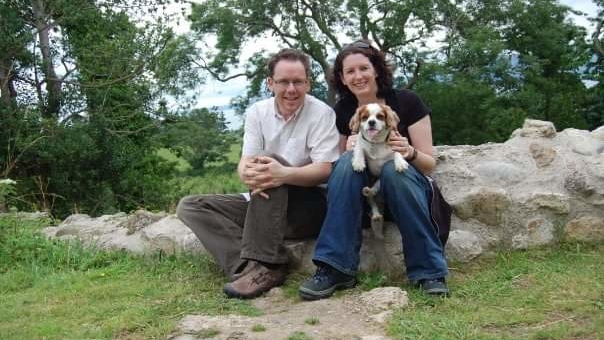

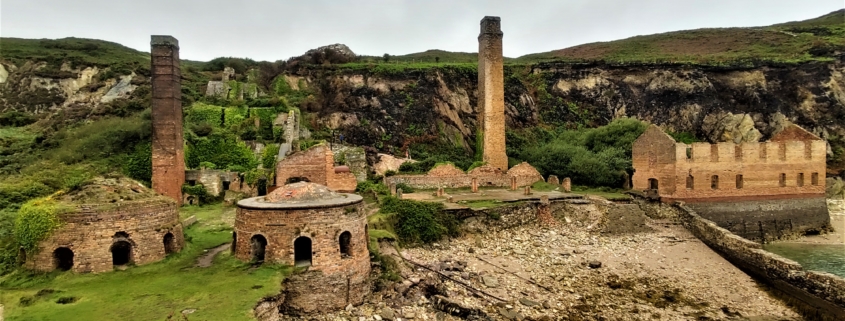


Two weeks in Anglesey sounds pretty good.